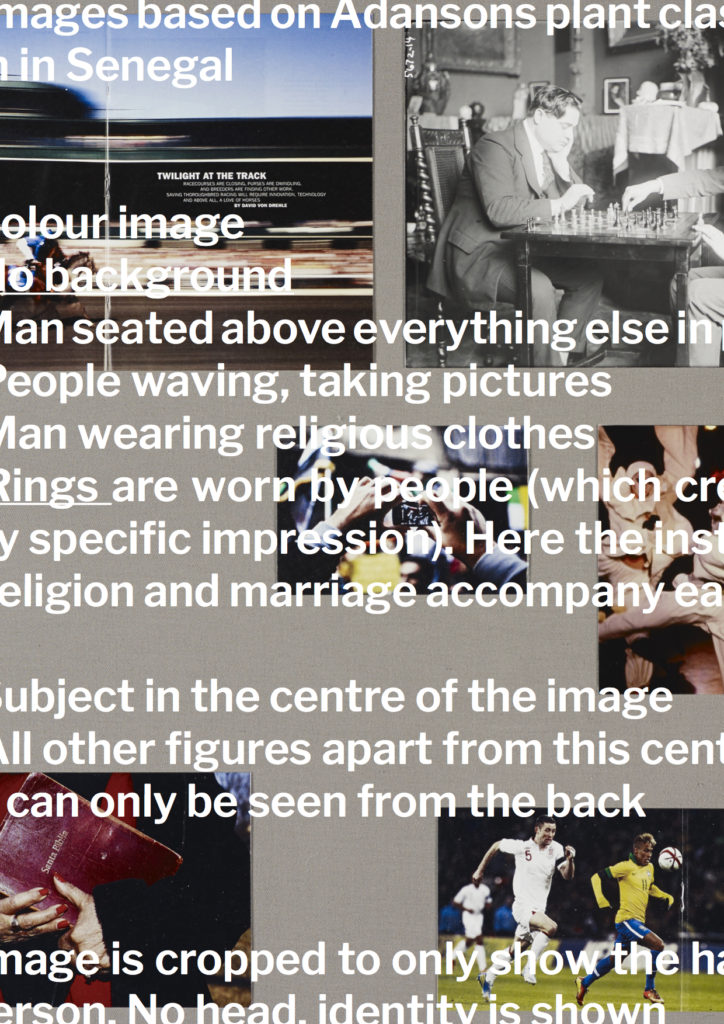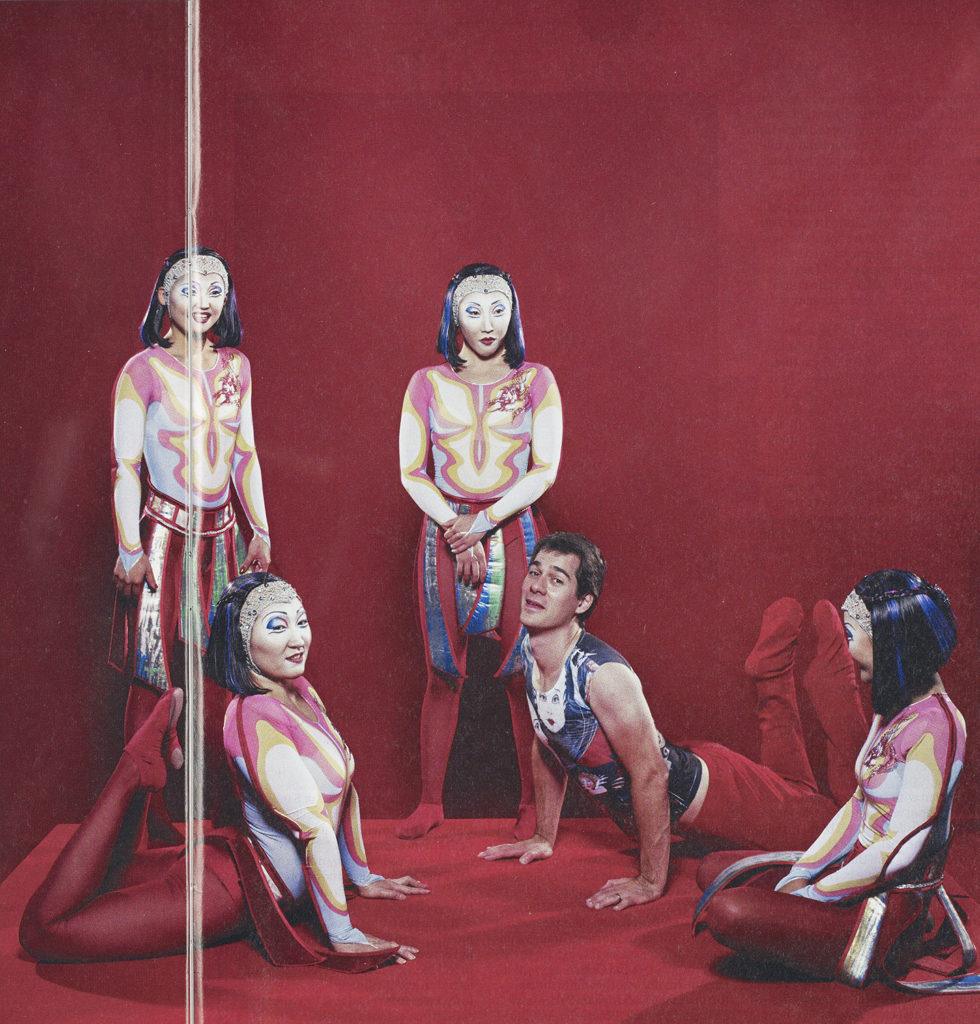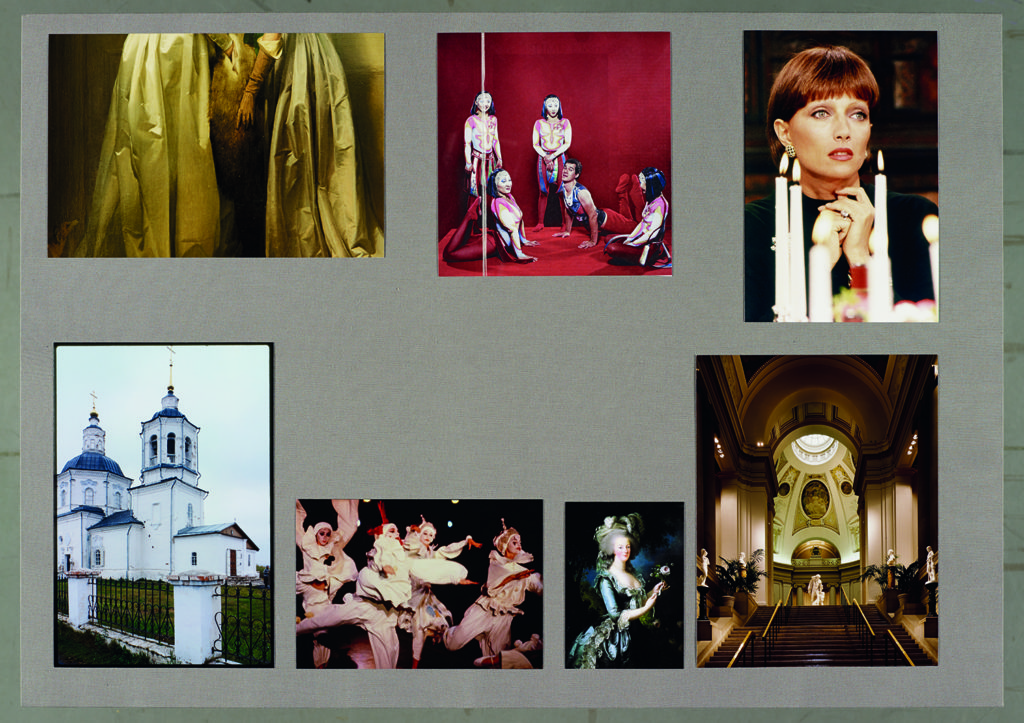Cover – Crop from a Plate Found in the Installation European Civilisation, Peter the Great and the Order of Things (2014)
Fari Shams
To cite this contribution:
Shams, Fari. ‘Crop from a Plate Found in the Installation European Civilisation, Peter the Great and the Order of Things (2014)’ OAR: The Oxford Artistic and Practice Based Research Platform Issue 2 (2017), http://www.oarplatform.com/cover-crop-plate-found-installation-european-civilisation-peter-great-order-things-2014/.
Statement
Before a trip to Russia, a lecture by John Merriman on Peter the Great prompted me to select keywords from its transcript, and to look into the three archives of the Library of Congress, The New York Public Library and the 2012 editions of TIME magazine to bring together a selection of 145 images that describe Peter’s character in accordance with these sources. The images are arranged in different configurations according to three systems of classification, on a board with a stretched grey fabric, and photographed from above. The three systems represent distinct approaches to classification, and generate a continuous reconfiguration of images on the plate, each time as legitimate as the previous and the next.
The crop here is from a plate titled ‘background out of focus’. This category came about when I applied the same system to my images that Adanson has applied in order to classify plants in Senegal in 1763.1 By comparing each image to the next and only documenting the differences between each, a list of characteristics result that in turn define which images come together on a plate. The two other methods group the images firstly alphabetically using the name of the image, and secondly by defining each image as belonging to one of Diderot’s three branches of Knowledge of ‘Memory’, ‘Reason’ and ‘Imagination’.2 A total of 212 plates arise through these arrangements, and the installation presents them within a four-volume book, a noticeboard and a projection that continuously loops a selection of 40 plates.
A violation of purpose results in the boundlessness of configurations of images which have come about as a result of multiple parameters that are controlled by the artist, from the selection of finite keywords in the lecture, to the sourcing, and then defining of each image through language and positioning and arrangement on each plate. Peter liked ‘Fancy dances’, so this keyword gives rise to the image below titled ‘Trapeze’, which in turn finds itself on the plate ‘T’ alphabetically, and under ‘Imagination’ within Diderot’s method. In looking at the ‘Map of the System of human Knowledge’,3 we see dance is not explicitly classified but instead, the dramatic, the poetic, the comic and allegory are defined under his category of ‘Imagination’. It may, however be argued that this image has a lot to do with memory. The costumes, makeup and poses seem to belong to a history, but Diderot’s Map does not have room for this relationship.
Trapeze, 2012 (image courtesy of TIME magazine).
–
Fari Shams, Imagination plate no.1, 2014, (from European Civilisation, Peter the Great and the order of things), inkjet print.
1. Michel Andanson, Familles des plantes (Paris:Vincent, 1763).
2. Denis Diderot, ‘Système Figuré des Connaissances Humaines,’ in Encyclopédie, ou dictionnaire raisonné des sciences, des arts et des métiers, ed. Denis Diderot, Jean le Rond d’Alembert, et al. (Paris: Briasson, David l’aîné, Le Breton, Durand, 1751–57).
3. Ibidem.



